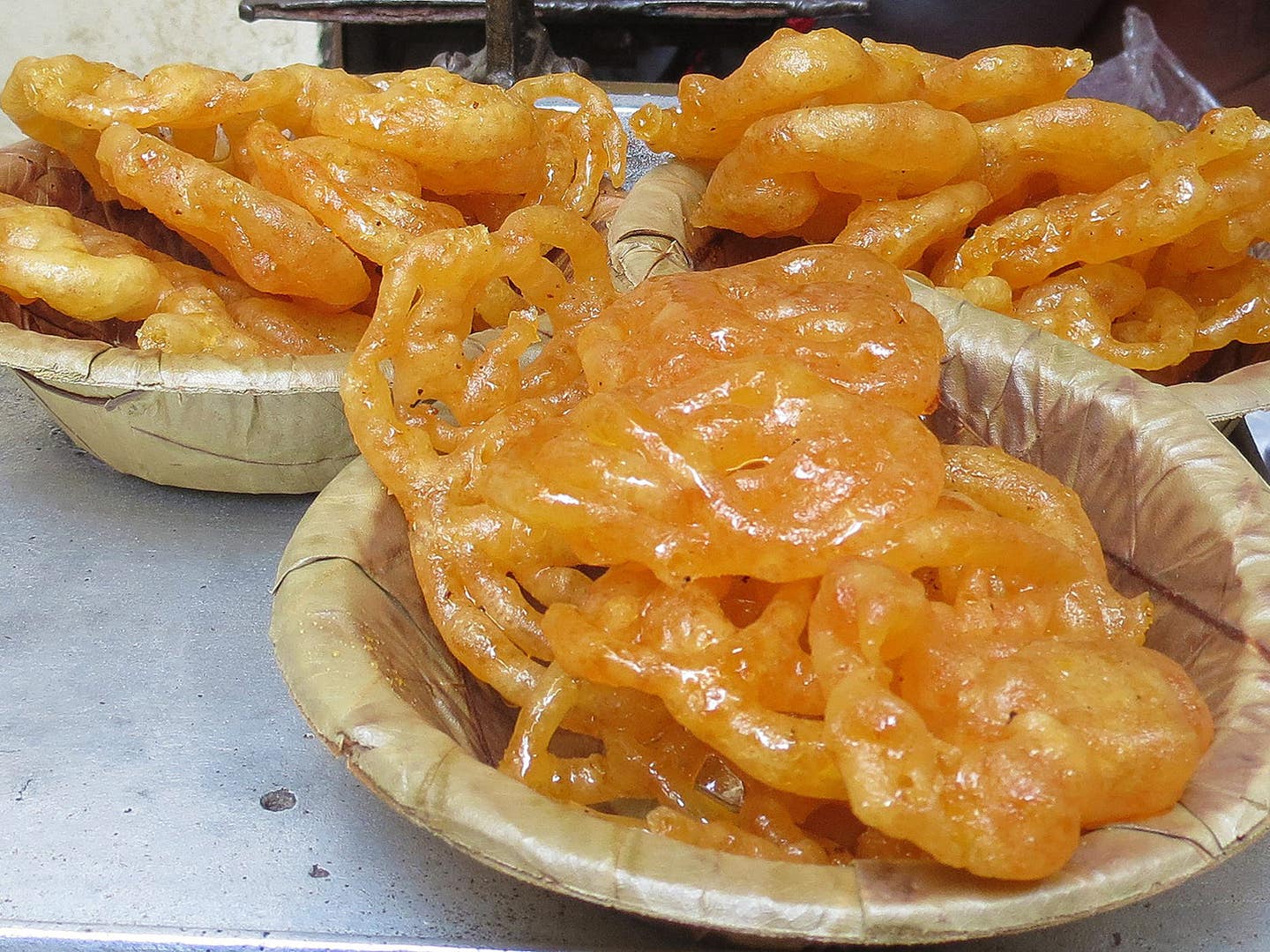
This Family Business Is Known for Making the Best Fried, Saffron-Soaked Jalebis
Here’s where to try them in Varanasi, India’s oldest city
In the cramped alleys that lead to Varanasi's ghats, the series of steps along the edge of the Ganges River, you can smell all sorts of foods in the making: It might be the piquant scent of the black pepper and green chiles that go into kachori sabzi, in which a deep-fried crust is filled with lentils and dunked into a zesty sauce. You might catch a whiff of the cannabis-infused bhang thandai, a milk-based drink served chilled at licensed shops. Or it might be the sweet aroma of gulkand, a preserve of rose petals wrapped in a betel leaf. The green leaf also contains fennel seeds, cardamom, and glazed cherries, and makes a delicious digestive to end every meal in Varanasi, India, in the state of Uttar Pradesh.
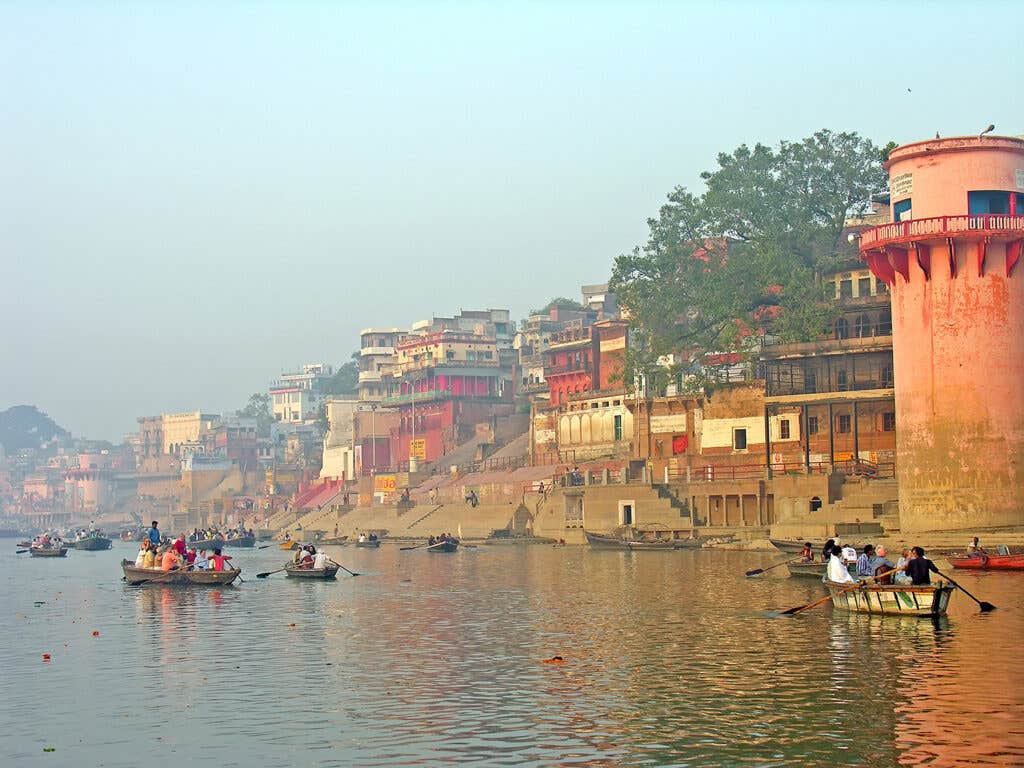
Varanasi, or Kashi, as the city is referred to in Hindu texts, is said to be among the oldest continually inhabited places on Earth, and one created by Lord Shiva of the Hindu holy trinity. Pilgrims believe that a dip in the Ganges absolves one of their sins. The city also has a much-visited shrine—Annapurna Devi Mandir—dedicated to the "Goddess of Food," an avatar of Parvati, the consort of Shiva. Anna, or food, holds a special place in Hinduism, and the act of eating transcends the physical, nourishing not just the body, but also the mind and soul. It's little wonder that the city comes with a rich food culture.
But betel leaves and cannabis drinks aside, it's the jalebi that's truly at the heart of Varanasi, a sugar-soaked fried dough spiral that locals gulp down for breakfast on the daily. The word is believed to have come from the Arabic zulabiya or the Farsi zoolbia, which suggests that the treat may have been brought by Turkic invaders, also known as the Mughals. Since present-day Uttar Pradesh was once the heartland of the Mughal Empire, this perhaps accounts for the continued popularity of the dish in the north Indian state. "Gunyagunabodhini," a Sanskrit text which dates back to around 1600, lists the materials used in a sweet dish, and explains the method of preparation; both are almost identical to the ingredients and cooking method of the jalebi as it is made in India today.
In the labyrinthine lanes of Thatheri Bazar, a popular market not far from the ghats, is one of the most famous jalebi vendors in Varanasi. Ask any local to direct you to their favorite jalebi spot and you'll find yourself at the Ram Bhandar. Despite its popularity, the eatery remains nondescript, nestled among whirring motorbikes, crumbling heritage havelis (mansions), and the occasional wandering cow. It spans maybe 15 feet by 10 feet, with hungry crowds spilling out into the lane.
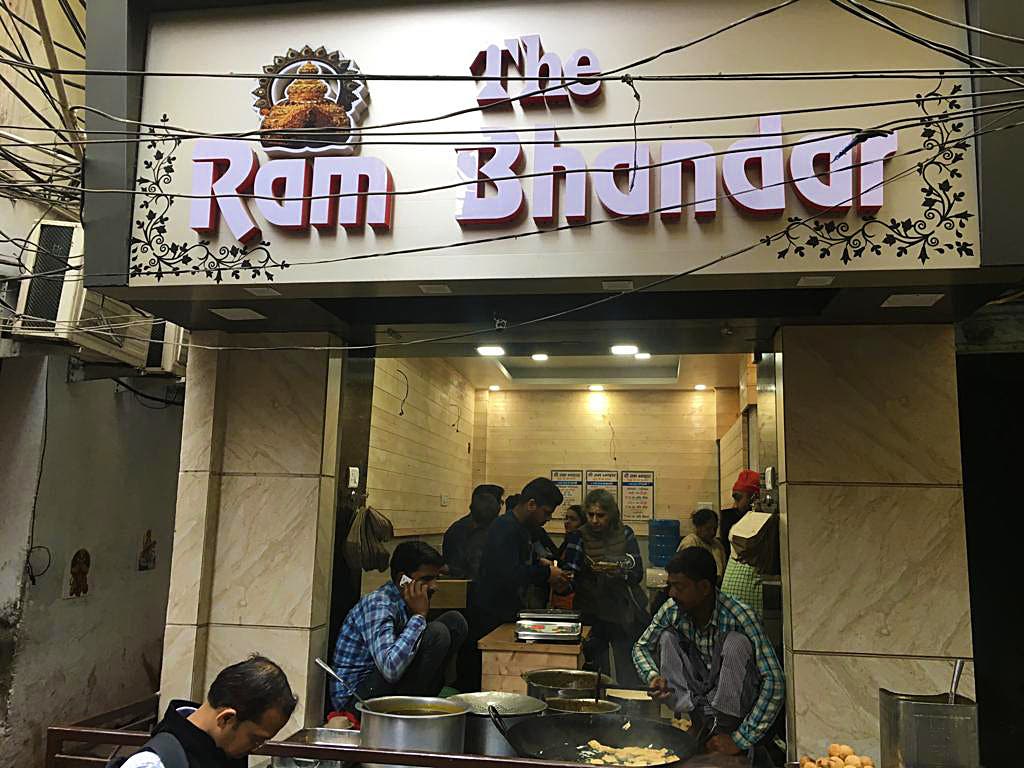
On the edge of the tiny shop stands a makeshift kitchen where a cook squats before a large handi, or deep pan, filled with oil, bubbling over a flame. He lifts a cone filled with a batter of maida (a finely milled wheat flour), corn flour, baking soda, and ghee (or so I assume, based off the standard jalebi formula; the owner refuses to share the contents, citing "secret ingredients"). Trailing the batter from the cone, he delicately traces concentric circles over the searing oil. With a large steel ladle, he stirs the oil as the circles bob to the surface, at first white, then pale yellow, and finally glowing orange. The vibrant spirals are removed and immediately dunked in a sugar syrup infused with saffron. After soaking for a bit, they are served hot, in a betel-leaf bowl. The warm jalebi has a satisfying crunch, which gives way to a soft, chewy texture within, and fills the palate with sticky-sweet goodness. It's an ideal chaser for a plate of peppery kachori sabzi, which happens to be the second-most popular dish at the Ram Bhandar.
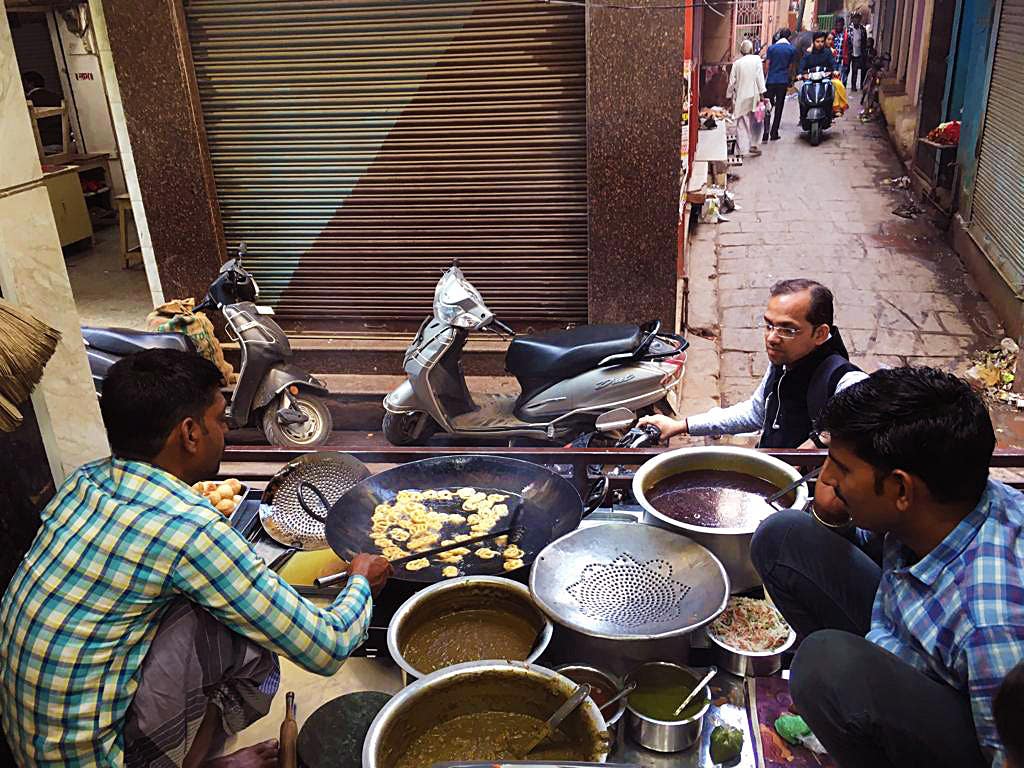
It’s only 11 a.m., and a crowd is still huddled around the storefront, but the shutters are already coming down. The Ram Bhandar will reopen in the evening, when the morning scene will repeat itself. It’s curious that one of the city’s most popular vendors would run out of stock regularly, leaving many customers disappointed, but Mr. Rajendra Gupta, owner of the Ram Bhandar, simply says: “One must not hanker for money in the land of Shiva."
In discussing the beginnings of the Ram Bhandar, Gupta often comes back to the Hindu idea of santosha, or satisfaction with one's lot, shunning jealousy and competition for the sake of contentment. Gupta explains, "My grandfather Raghunath Prasad Gupta started a sweet shop, not far from my own, in 1888. It became a hit, and we often got orders from members of royal families. We also won several culinary awards." Over generations, as the family grew, they felt the need to split the business into two locations. While it shares a name with the original branch, Gupta's shop, which opened in 2000, is colloquially referred to as the "Ram Bhandar of Thatheri Bazar." Gupta says, "I only knew to sell sweets such as laddus and badam chura. But if I continued selling the same items as my cousin, I'd hurt his business. So I decided to experiment with a new treat. I chose jalebi, as it has always been extremely popular in Varanasi." Today, as the market has grown, jalebis are served at both cousins' stores.
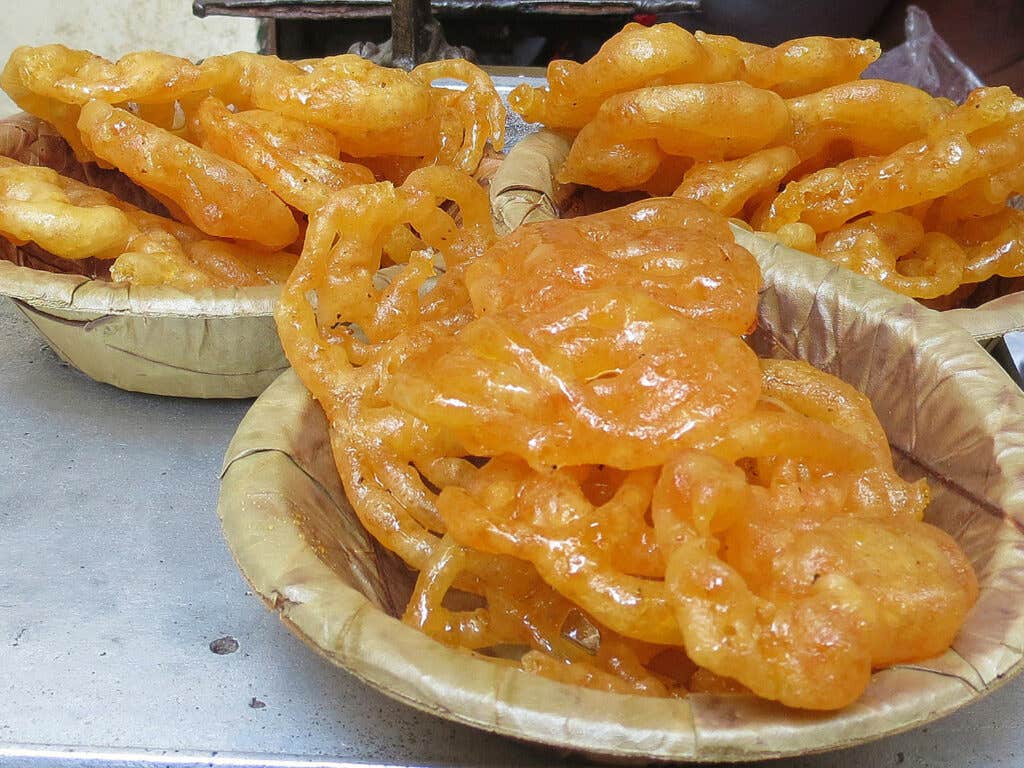
Gupta's complete lack of interest in expansion is reflected in the fact that he refuses to hire a full-time chef. Instead, he relies on a rotation of daily-wage workers, who serve as his kitchen staff throughout the day. “We start early,” he says, “around 5 a.m. Everything is served fresh. We start service around 8 a.m., and I sell about 250 pieces of jalebi in the morning." If you miss out on the morning batch, you can drop by around 5 p.m. when Gupta and his crew open up shop again. At both times, expect to bump into Gupta, who sits at the cash desk, inches from the cook. Often, he makes his way into the crowds, chatting up the regulars. Even though he may not always seem alert—with his spectacles slipping down his nose, and his mobile phone vying for his attention—he knows exactly the order in which the customers have arrived, and nobody is served out of turn.
Ironically, fame has followed the humble shopkeeper. Gupta says, "I don't know much about the internet. But my son tells me we are listed online and have rave reviews. Also, several television channels have dropped by to film us as we go about our day." He admits that crowds have increased post-coverage and is “grateful for the appreciation.” But will this extra demand get him to extend his working hours? "No. I am happy; our needs are met. What more could I ask for?"
Keep Reading
Continue to Next Story










